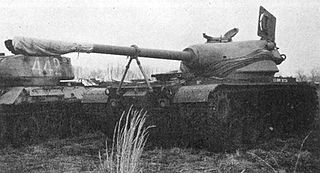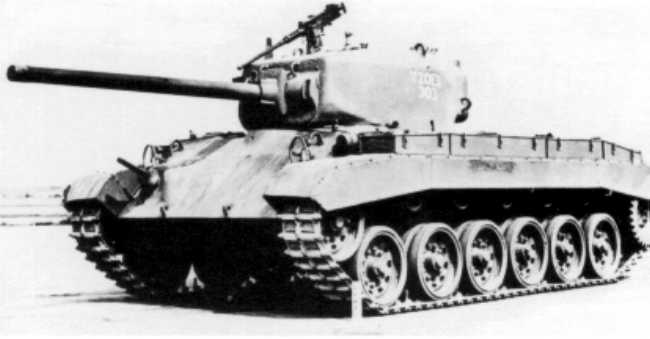

United Shoe Machinery Corporation (USMC) was a U.S.-based manufacturer of various industrial machinery, particularly for the shoe manufacturing industry and monopolized the American shoe machinery business. [1] It was an important federal government's defense contractor during the World War I, Interbellum years, World War II and the Cold war era, which developed and manufactured various land and aircraft armaments, as well as components for the military hardware made by other manufacturers. Founded in Beverly, Massachusetts, its corporate headquarters were eventually relocated to Boston, with key production facilities scattered around Massachusetts. It had subsidiaries in other countries including British United Shoe Machinery in England.
History
The Smithsonian National Museum of American History provides the following account of the history of the United Shoe Machinery Corporation.
The United Shoe Machinery Company was formed in 1899 by the consolidation of three shoe machinery firms in the industry: Goodyear Shoe Machinery Company; Consolidated McKay Lasting Machine Company; and McKay Shoe Machinery Company. The new company continued the practice previously followed by its constituent firms of renting machinery that it manufactured instead of selling it. After the 1899 merger, United grew quite rapidly. In 1903, it began construction of a new factory in Beverly, Massachusetts about thirty-five miles from Boston. At its peak, this company employed 9,000 workers and produced eighty-five percent of all shoemaking machines in the United States. By 1910, it had an eighty percent share of the shoe machinery market with assets reaching forty million dollars, and it had acquired control of branch companies in foreign countries. In 1917, the United Shoe Machinery Corporation, incorporated in 1905, absorbed the United Shoe Machinery Company. The United Shoe Machinery Corporation had its headquarters in Boston and its main manufacturing plant in Beverly, Massachusetts. In 1968, the United Shoe Machinery Corporation changed its name to USM Corporation. In 1976, United Shoe Machinery Company merged with Emhart Industries and produced the modern-day Emhart Corporation. In 1989, in order to resist a two billion dollar takeover attempt by a New York investment group (which included oil heir Gordon P. Getty), Emhart merged with Black & Decker Corporation. The merged company operates from Black & Decker's headquarters in Towson, Maryland. The company headquarters in Farmington, Connecticut, were closed in June 1989. [2]
In December 1947 the US government brought proceedings against USM alleging a breach of the Sherman Antitrust Act in that the company had been a monopoly since 1912. [3] A "trial of prodigious length" followed, with the verdict going against USM, but the corporation wasn't broken up and the judgement and remedy was confirmed by the Supreme Court in 1954.
The government renewed its complaint in 1967 but although the District Court ruled nothing had changed, this time the Supreme Court ordered USM to be broken up. It was required to divest a substantial part of its business and change its leasing strategy over a 10-year period, with the sell-off raising $400 million. It continued to innovate within the shoe manufacturing industry, but it also developed such modern inventions as the hot glue gun, the soda can pop-top, the drive mechanism for the lunar module, and pop rivets for the Concorde. [3] However, the attempts at diversification failed to generate enough money and in 1976 the company, heavily in debt, was bought by Emhart Corporation, now Stanley Engineered Fastening, [4] an organisation half its size. [5]
In 1987 a management buyout led by the management of British United Shoe Machinery (BUSM) bought the shoe machinery operations, including USM, from Emhart Industries and control of USM then passed to the U.K. as part of the newly created United Machinery Group (UMG). [6] Subsequently, the USM headquarters moved into a new high-tech factory outside Boston. In 1995 UMG was acquired by Venture Capitalists Apax Partners Corporate Finance Limited, [7] but after financial difficulties UMG went into administration in 2000.
Research and development
The corporation pioneered the development and production of a synthetic leather materials. [8]
During the Interbellum era corporate Research Division designed and developed gun mounts, gun turrets, fire control equipment, automatic guns, automatic fuse setting, bomb release equipment, automatic conveying equipment, and automatic rocket projectors, as well as many other things of military interest. [9]
During the postwar years, the corporate engineers experimented intensively with armoured fighting vehicles of modular design, kindred by common chassis, common armor elements, interchangeable armament, automatic loading for weapons, and low weight in order to attain high speeds, coupled with various comfort add-ons provided for the housed crew. [10]
Production items
- T54E1 medium tank
- Turtle-series, IVI prototype gun motor carriages (33 tons, tracked, turreted, 4-man crew situated below the upper hull line, 600-hp engine, armor thickness 3 to 61⁄2 inches, dimensions: 18'7" long, 9'4" wide, 7' tall, carrying various promptly interchangeable turrets, different main armament with automatic feed system; plus twin 30 mm driver's coaxial machine gun, one .30 caliber commander's machinegun, and one .50 caliber AA machinegun each; weapon stabilization in addition to driver stabilization, internal air cleaning and air conditioning systems) [10]
- IVI Gun Motor Carriage, quadruple .50 caliber machine gun (main) [10]
- IVI-C Gun Motor Carriage, twin 37 mm guns [11]
- IVI-D Gun Motor Carriage, single-barrel 75 mm tank gun (gunner's compartment separated from the crew compartment, allowing the gunner to move with the weapon in elevation and in azimuth) [11]
- prototype heavy armored combat vehicles with oscillating turret
- prototype armored combat vehicles with externally mounted main gun
- Gun turrets and armament
- tank turrets
- T20E1 ( Fisher Body Div. of General Motors) [12] Medium Tank turret mounting the 76 mm M1 gun with an autoloader [13]
- T22E1 (Chrysler's DTA) [14] Medium Tank turret mounting the 75 mm M3 gun equipped with an autoloader [13]
- T77 Gun Motor Carriage multibarrel .50 caliber machine gun mount T89 [15]
- High Speed Harmonic Drive Speed Reducer for slow and stabilized rotation of shipboard or tank heavy gun turrets
- tank guns [16]
- 37 mm tank gun M5 [16]
 |
T20-series of tanks carried a gun turret, developed by the corporation
|
37 mm tank gun M5 installed at a turret of
M5A1 light tank
|
- 37 mm antitank gun M3 [17]
- 37 mm towed antitank gun carriage [18]
- shell ramming [19]
- fuze setting devices [19]
 |
- B-17 Flying Fortress ball turret [20]
- YA-14 Shrike and XP-71 pressurized turret [21]
- waist gun mounts
- XB-40 Flying Fortress [22] and XB-41 Liberator power-operated M5 waist gun mounts [23]
- remote hydraulic controls for special M2 machine gun installations for aircraft
- gas-piston operated guns
- machined items for attack and utility helicopters (e.g. UH-1 Iroquois)
 |
 |
 |
 |

- Aerospace equipment
- machined items for military satellites ( Telstar)
- Industrial machinery
- electronic component assembly machines
- automatic assembly machines for assembling military radar sets
Structure
The corporation had several divisions, subsidiaries and affiliates, which were located mainly in Massachusetts.
See also
- Jan Ernst Matzeliger
- United Shoe Machinery Corporation Building
- United Shoe Machinery Corporation Clubhouse
References
- ^ United Shoe Machinery Co., Information: A Monthly Digest of Current Events and World Progress Covering Jan. 1915 – May 1917, v. 3, p. 307.
- ^ United Shoe Machinery Corporation Records, 1898–1987 by Smithsonian National Museum of American History
- ^ a b "United States v. United Shoe Machinery Corporation, District Ct. of the U.S., District of Mass., 1949–1952 Finding Aid". Harvard Law School. July 2004. Archived from the original on 10 December 2012. Retrieved 8 July 2020.
- ^ "The STANLEY Engineered Fastening Group - STANLEY® Engineered Fastening".
- ^ Howie 1999, p. 99
- ^ Howie, Iain (1999). USM Serving the Shoemaker for 100 years. Shoe Trades Publishing. p. 115. ISBN 0-9536531-0-2.
- ^ Howie 1999, p. 125
- ^ Ward, A. G. Substitutes for Leather, New Scientist, 5 September 1963, no. 355, p. 502.
- ^ His Brogue Livens Field Test of Gun, The Exponent, January 1949, v. 61, no. 1, p. 29.
- ^ a b c Icks 1965, p. 26.
- ^ a b Icks 1965, pp. 26–27.
- ^ Hunnicutt 1996, p. 52.
- ^ a b Hunnicutt 1996, p. 68.
- ^ Hunnicutt 1996, p. 62.
- ^ Hunnicutt 1992, p. 348.
- ^ a b United Shoe Builds Guns For and Against Tanks, Iron Age, October 30, 1941, v. 148, no. 18, p. 95.
- ^ Thomson & Mayo 1960, pp. 81, 87.
- ^ Thomson & Mayo 1960, p. 81.
- ^ a b Contracts, Iron Age, October 9, 1941, v. 148, no. 15, p. 95.
- ^ Veronico 2014, p. 13.
- ^ Holley, Irving B. Development of Aircraft Turrets in the AAF, 1917–1944, Defense Technical Information Center, 1947, p. 128.
- ^ Veronico 2014, p. 15.
- ^ Veronico 2014, p. 14.
Books
- Hunnicutt, R. P. (1996). Pershing: A History of the Medium Tank T20 Series (2nd ed.). Spearville, KS: Feist Publications.
- Hunnicutt, R. P. (1992). Stuart: A History of the American Light Tank (1st ed.). Novato, CA: Presidio Press. ISBN 9780891414629.
- Icks, Robert J. (1965). "WW II "Turtle series" of armored vehicles". Armor. 74 (1, January–February).
- Thomson, Harry C.; Mayo, Lida (1960). The Ordnance Department: Procurement and Supply. Washington, D.C.: U.S. Dept. of the Army, Office of the Chief of Military History.
- Veronico, Nick (2014). Bloody Skies: U.S. Eighth Air Force Battle Damage in World War II. Mechanicsburg, PA: Stackpole Books. ISBN 9780811714556.
External links
- Historic American Engineering Record (HAER) No. MA-71, " United Shoe Machine Company, 134 McKay Street, Beverly, Essex County, MA", 6 photos, 1 photo caption page


